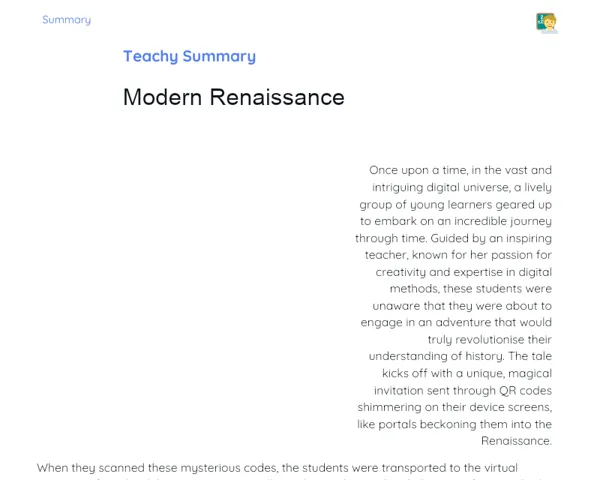Summary Tradisional | Space in the Construction of Dance Movements
Contextualization
In the world of dance, space stands as a pivotal element that significantly shapes how movements are carried out. This can be split into personal space, which is the close area surrounding a dancer’s body, and general space, encompassing the overall environment available for dance. By grasping and correctly using these spaces, we can greatly enhance a performance, making it more expressive and captivating. Exploring space paves the way for dancers to generate varied and dynamic movements, enriching choreography and making a deeper connection with the audience.
Moreover, orientation in space involves the use of various directions (like forward, backward, sideways) and levels (high, medium, low) throughout the dance. These aspects are crucial in crafting layered and intricate choreography. Dancers also need to be mindful of the body’s planes and axes, contributing to the coordination and accuracy of movements. Engaging with space and fellow dancers during practice sparks creativity, teamwork, and body awareness, all of which are valuable not only in dance but in daily life activities as well.
To Remember!
Personal and General Space
Personal space is the area right around the dancer’s body, often used for smaller, more confined movements. It’s vital for detailed actions like hand gestures and facial expressions that don’t require much room to move. Mastering personal space is key to achieving precision and expressiveness in dance.
Conversely, general space refers to the whole area designated for dance, whether it be on stage, in a studio, or any other venue. Movements that exploit general space tend to be broader and incorporate bigger movements, like running or jumping. Effectively using general space injects energy into a performance, making it more engaging for viewers.
Distinguishing between personal and general space enables dancers to choreograph with the full environment in mind. This distinction is particularly crucial in group performances, where coordination and the arrangement of dancers in space are vital to avoid mishaps and to create a visually appealing display.
-
Personal space: immediate area around the body, used for smaller, contained movements.
-
General space: total environment open for dance, used for larger movements.
-
Understanding and using these spaces enhances choreography and performance.
Directions and Levels
In dance, directions refer to the different paths a dancer can take during movements. The basic directions encompass forward, backward, sideways, and diagonally. Incorporating various directions into choreography helps formulate intricate patterns and maintains audience attention through added complexity and visual allure. Movements in diverse directions also foster a better exploration of the general space at hand.
Levels deal with the height at which movements occur. The three primary levels are high, medium, and low. High-level actions include jumps, while medium-level movements are typically performed while standing, and low-level actions bring the dancer closer to the ground, like squats or rolls. Mixing different levels adds texture and dynamism to the performance.
Grasping and effectively applying directions and levels is essential for any dancer. This knowledge allows for the cultivation of more complex and visually captivating performances and aids in coordination and spatial planning, especially during group dances. Varying directions and levels enrich expressiveness and emotional conveyance through dance.
-
Directions: forward, backward, sideways, and diagonally.
-
Levels: high, medium, and low.
-
Mixing directions and levels adds richness and complexity to performances.
Planes and Axes
Planes in dance are the theoretical surfaces that break space into various orientations, notably horizontal, vertical, and sagittal. The horizontal plane runs parallel to the ground and includes movements such as spins and rolls. The vertical plane is at a right angle to the ground, encompassing upward and downward movements like jumps. The sagittal plane halves the body into left and right and involves movements moving forward and backward. Knowing these planes helps dancers execute movements with coordination and accuracy.
The body’s axes are theory-based lines that movements revolve around, comprising the longitudinal, transverse, and sagittal axes. The longitudinal axis stretches from head to toe and is tapped into during spins. The transverse axis spans from side to side, engaged during elevation and descent movements. The sagittal axis links forward and backward actions. Being aware of these axes enables dancers to perform movements with enhanced control and coordination.
Merging the understanding of planes and axes allows for the creation of more intricate, three-dimensional movements that add depth and visual impact. These concepts are fundamental for achieving precise and cohesive choreography.
-
Planes: horizontal, vertical, and sagittal.
-
Axes: longitudinal, transverse, and sagittal.
-
Understanding planes and axes facilitates coordinated, multidimensional movements.
Dimensions of Movement
The dimensions of movement in dance encompass various features that can be adjusted to introduce variety into movements. Amplitude is one of these dimensions, referring to the size of the movement. Movements with large amplitude spread over more space, while those with small amplitude are closer and more contained. Altering amplitude impacts how movement is perceived, adding expressiveness or detail.
Direction is another dimension, with movements being either single or multiple. Single-direction movements are more directed and concentrated, while those with multiple directions are complex and dynamic. Altering the direction of movements throughout a performance holds the audience’s attention and heightens the choreography’s complexity.
Speed is the third dimension and can vary from fast to slow. Quick movements exude energy and intensity, while slower-paced movements often communicate tenderness and expressiveness. Varying the speed of movements during dance creates contrast, injecting drama or lightness into the performance. An awareness and application of these movement dimensions is key for any dancer to produce richer and more captivating choreography.
-
Amplitude: the size of the movement, can be large or small.
-
Direction: single or multiple.
-
Speed: quick or slow, contributing to contrast and expressiveness.
Interaction with Space and Peers
Interacting with space in dance means consciously and creatively utilizing the environment around a dancer. This includes effectively navigating the available general space, avoiding collisions, and maximizing the area to develop dynamic choreography. Engaging with the space lets dancers explore different sections of the stage or hall, infusing variety and visual interest into performances.
Peer interaction in dance is just as vital, especially in group routines. Coordination and communication among dancers help ensure that movements are synchronized and visually harmonious. This could be mirrored movements, where dancers execute identical movements at the same time, or complementary movements, where one dancer’s actions enhance another’s.
Collaborating as a team and engaging with peers during dance nurtures creativity and a sense of unity. This approach results in more cohesive and visually compelling performances, and these coordination and cooperation skills are also advantageous in other collaborative activities.
-
Interaction with space: engaging creatively with the environment.
-
Interaction with peers: coordinating for synchronized and fluid movements.
-
Teamwork in dance cultivates creativity and cohesion.
Key Terms
-
Personal space: immediate area surrounding the dancer's body.
-
General space: the total environment available for dance.
-
Directions: movement orientations (forward, backward, sideways, diagonally).
-
Levels: height of movements (high, medium, low).
-
Planes: imaginary surfaces dividing space (horizontal, vertical, sagittal).
-
Axes: imaginary lines around which movements occur (longitudinal, transverse, sagittal).
-
Amplitude: size of movement (large or small).
-
Speed: rate of movement (quick or slow).
-
Interaction with space: utilizing the surrounding environment.
-
Interaction with peers: coordination and communication among dancers.
Important Conclusions
In today’s lesson, we delved into how space influences the formulation of dance movements, distinguishing between personal and general space and exploring how each can enhance performances. We also examined using directions and levels to craft more intricate and visually appealing choreography, alongside our understanding of the body’s planes and axes to refine movement coordination and precision.
We ventured into the dimensions of movement, such as amplitude, direction, and speed, highlighting how adjusting these factors can inject expressiveness and vitality into dance. The emphasis on interaction with space and peers was underscored as a critical element in forming cohesive and harmonious choreography, fostering teamwork and creativity.
Grasping these concepts is essential for any dancer, allowing for a more expressive and coordinated performance. Moreover, these skills extend beyond the dance floor, aiding in the development of improved body awareness and cooperative abilities in daily life.
Study Tips
-
Review the distinctions between personal and general space, directions and levels, planes and axes, and dimensions of movement, jotting down detailed notes on each.
-
Practice different dance sequences in front of a mirror, being mindful of how you utilize space, directions, and levels.
-
Watch videos featuring professional dancers to observe their use of space and interactions with others. Try to reproduce some of the movements and arrangements you observe.



